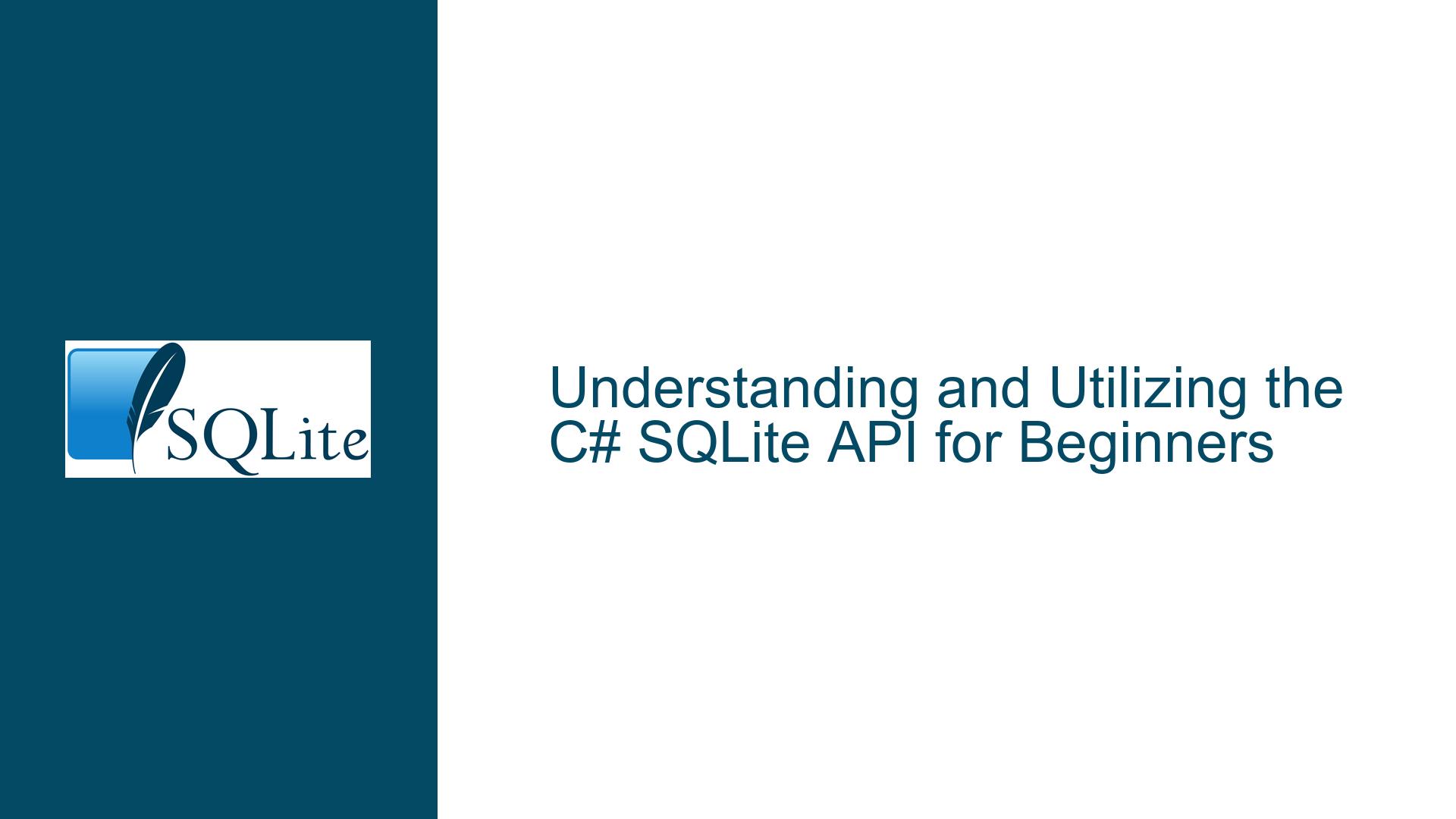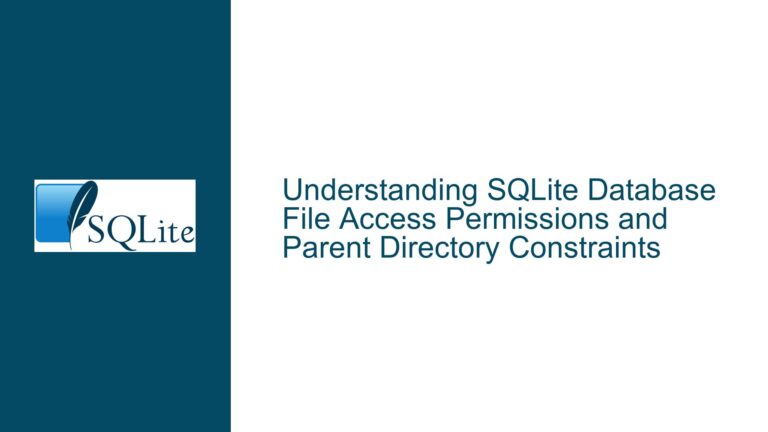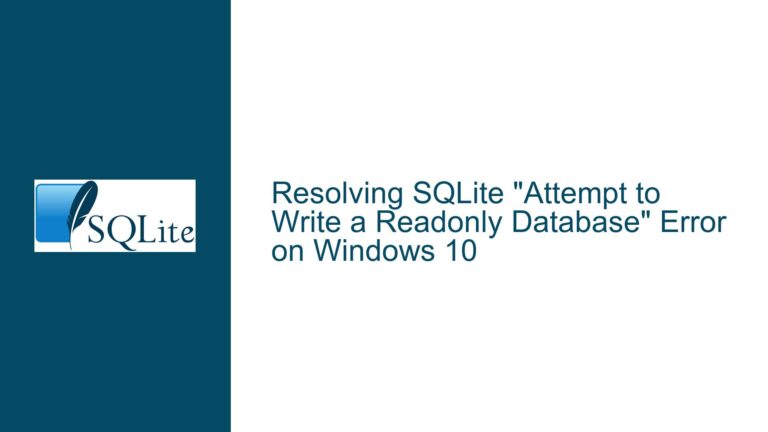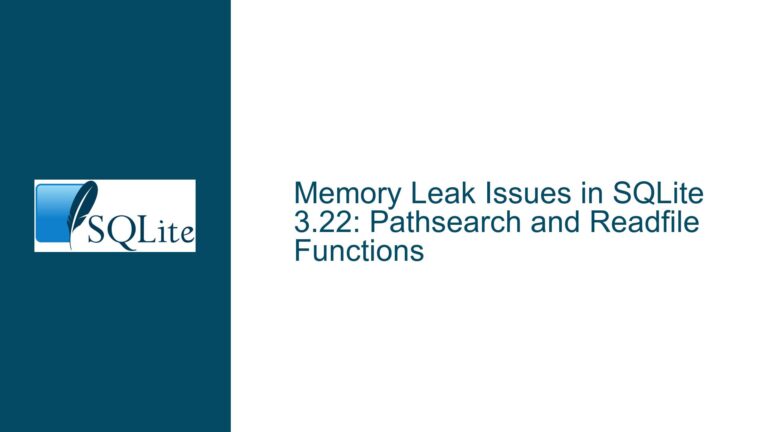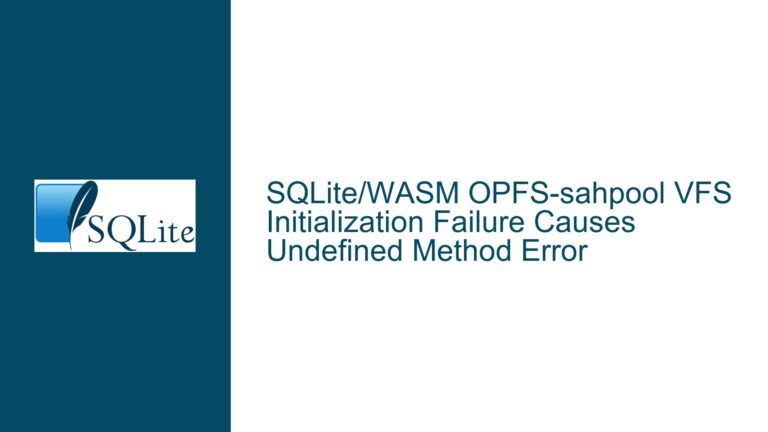and Utilizing the C# SQLite API for Beginners
Navigating the C# SQLite API: A Comprehensive Guide
The C# SQLite API serves as a bridge between C# applications and SQLite databases, enabling developers to perform database operations such as creating, reading, updating, and deleting records directly from their C# code. This API is particularly useful for developers who are building applications that require a lightweight, serverless database solution. SQLite, being embedded within the application, offers a straightforward setup without the need for a separate database server.
The API includes several key classes such as SQLiteConnection, which manages the connection to the database; SQLiteCommand, which executes SQL statements against the database; and SQLiteCommandBuilder, which helps in generating commands automatically. Understanding these classes and their methods is crucial for effectively managing database operations in C# applications.
For beginners, the challenge often lies in the initial setup and understanding of how these classes interact with each other. The API documentation, while comprehensive, can be daunting due to its depth and the technical jargon used. Therefore, a step-by-step approach to learning the API, starting from basic operations and gradually moving to more complex functionalities, is recommended.
Common Pitfalls When Starting with C# SQLite API
One of the primary issues faced by newcomers is the confusion between the native SQLite C API and the C# wrappers. The SQLite C API is the core library written in C, and various programming languages, including C#, have created wrappers around this core to facilitate easier integration. However, not all wrappers are officially maintained by the SQLite development team, leading to inconsistencies and potential compatibility issues.
Another common pitfall is the improper handling of database connections and commands. Beginners might not close database connections properly, leading to resource leaks. Similarly, executing SQL commands without proper error handling can cause the application to crash or behave unpredictably. Understanding the lifecycle of database connections and commands, and implementing robust error handling mechanisms, are essential skills for any developer working with the C# SQLite API.
Additionally, the lack of a clear, progressive learning path can hinder the understanding of more advanced features. Many resources available online provide quick, example-based tutorials that do not delve into the underlying principles or best practices. This can lead to a superficial understanding of the API, making it difficult for developers to troubleshoot issues or optimize their database interactions.
Step-by-Step Guide to Mastering the C# SQLite API
To effectively master the C# SQLite API, start by setting up your development environment. Download the necessary binaries from the official SQLite website, ensuring you select the correct version compatible with your .NET framework. For most applications targeting the .NET Framework 4.6 or later, the 64-bit precompiled binaries are recommended. Extract these binaries into your project directory, ensuring the System.Data.SQLite.dll and the appropriate SQLite.Interop.dll files are correctly referenced.
Next, create a basic C# application that connects to an SQLite database. Use the SQLiteConnection class to establish a connection, specifying the database file path in the connection string. Open the connection using the Open method, and ensure you close it using the Close method or by employing a using statement to automatically dispose of the connection object.
Once the connection is established, use the SQLiteCommand class to execute SQL statements. Start with simple INSERT and SELECT statements to get familiar with executing commands and retrieving results. For example, to insert a record into a table, create a new SQLiteCommand object, set its CommandText property to the SQL statement, and execute it using the ExecuteNonQuery method. To retrieve data, use the ExecuteReader method, which returns a SQLiteDataReader object that you can iterate over to access the result set.
To handle more complex scenarios, such as updating or deleting records, use parameterized queries to prevent SQL injection attacks. The SQLiteParameter class allows you to define parameters in your SQL statements, which can be safely assigned values at runtime. This not only enhances security but also improves the readability and maintainability of your code.
For advanced database operations, explore the SQLiteCommandBuilder class, which can automatically generate INSERT, UPDATE, and DELETE commands based on a SELECT statement. This can significantly reduce the amount of boilerplate code required for common database operations. Additionally, consider implementing transaction management using the SQLiteTransaction class to ensure data integrity and consistency.
Throughout your learning journey, make use of the official documentation and community resources. The System.Data.SQLite documentation provides detailed information on all classes and methods, along with examples and best practices. Engage with the community through forums and discussion threads to seek help, share knowledge, and stay updated on the latest developments.
By following this structured approach, you can progressively deepen your understanding of the C# SQLite API, from basic operations to advanced functionalities. This will enable you to build robust, efficient, and secure database-driven applications using SQLite and C#.
